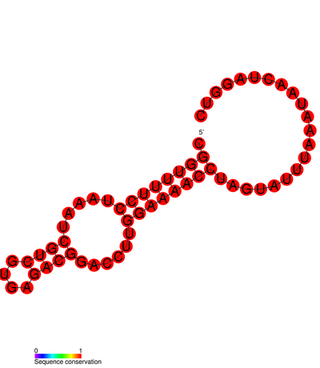
Closteroviridae is a family of viruses. Plants serve as natural hosts. There are four genera and 59 species in this family, seven of which are unassigned to a genus. Diseases associated with this family include: yellowing and necrosis, particularly affecting the phloem.
Sequivirus is a genus of viruses in the order Picornavirales, in the family Secoviridae. Plants serve as natural hosts. There are three species in this genus. Diseases associated with this genus include: PYFV: vein-yellowing, yellow flecks and yellow/green mosaic symptoms in parsnip, and ‘yellow net', followed by yellow spots and leaf distortion in celery.
Furovirus is a genus of viruses, in the family Virgaviridae. Graminae, winter wheat, wheat, triticale, oat, sorghum bicolor, and plants serve as natural hosts. There are six species in this genus. Diseases associated with this genus include: (SBWMV): green and yellow mosaic.
Tombusvirus is a genus of viruses, in the family Tombusviridae. Plants serve as natural hosts. There are 17 species in this genus. Symptoms associated with this genus include mosaic. The name of the genus comes from Tomato bushy stunt virus.
Tobravirus is a genus of viruses, in the family Virgaviridae. Plants serve as natural hosts. There are three species in this genus. Diseases associated with this genus include: SBWMV: green and yellow mosaic.

Cucumovirus is a genus of viruses, in the family Bromoviridae. Plants serve as natural hosts. There are four species in this genus.

Trichovirus is a genus of viruses in the order Tymovirales, in the family Betaflexiviridae. Plants, specifically angiosperms such as pome fruits, citrus, and pear, serve as natural hosts for this plant pathogen. There are seven species in this genus.

Alphaflexiviridae is a family of viruses in the order Tymovirales. Plants and fungi serve as natural hosts. There are 65 species in this family, assigned to six genera. Diseases associated with this family include: mosaic and ringspot symptoms.

Betaflexiviridae is a family of viruses in the order Tymovirales. Plants and fungi serve as natural hosts. There are 108 species in this family, assigned to 13 genera in two subfamilies. Diseases associated with this family include mosaic and ringspot symptoms.
Fabavirus is a genus of plant viruses in the order Picornavirales, in the family Secoviridae, in the subfamily Comovirinae. Plants serve as natural hosts. There are seven species in this genus.
Aureusvirus is a genus of viruses, in the family Tombusviridae. Plants serve as natural hosts. There are six species in this genus.
Bymovirus is a genus of viruses, in the family Potyviridae. Plants serve as natural hosts. There are six species in this genus.

Comovirus is a genus of viruses in the order Picornavirales, in the family Secoviridae, in the subfamily Comovirinae. Plants serve as natural hosts. There are 15 species in this genus.
Enamovirus is a genus of viruses, in the family Solemoviridae. Plants serve as natural hosts. There are five species in this genus. Diseases associated with this genus include: pea enation disease: if both PEMV-1 and PEMV-2 are present.
Foveavirus is a genus of viruses in the order Tymovirales, in the family Betaflexiviridae. Plants serve as natural hosts. There are eight species in this genus. Diseases associated with this genus include: mosaic and ringspot symptoms.
Panicovirus is a genus of viruses, in the family Tombusviridae. Panicae serve as natural hosts. There are three species in this genus. Diseases associated with this genus include: systemic mosaic.
Rymovirus is a genus of viruses, in the family Potyviridae. Plants serve as natural hosts. There are three species in this genus.
Tritimovirus is a genus of viruses, in the family Potyviridae. Plants serve as natural hosts. There are six species in this genus.
Alphanecrovirus is a genus of viruses, in the family Tombusviridae. Plants serve as natural hosts. There are four species in this genus.
Poacevirus is a genus of viruses, in the family Potyviridae. Poaceae plants serve as natural hosts. There are three species in this genus.





